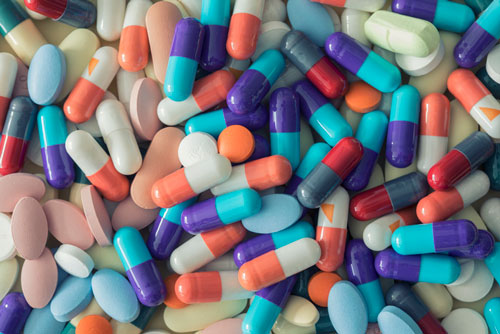When you suffer side effects after taking a pill, naturally you blame it on the drug in the pill. But in many cases, it actually has nothing to do with the drug.
What most people don’t know is that the majority of the material in pills are so-called inactive ingredients.
But they are far from inactive, according to a new report.
The study was published online by the journal Science Translational Medicine. The researchers surveyed more than 42,000 medications. These contained almost 360,000 inactive ingredients.[1]
Inactive ingredients are added to drugs for many reasons. Some prolong shelf-life. Others improve taste or absorption. Some make the drug tamper-proof.
But it’s not uncommon for people to be allergic to some of those ingredients… Peanut oil, lactose, gluten, and chemical dyes are prime examples.
Dr. C. Giovanni Traverso was the study’s lead author. He said that most pills are about 75% inactive ingredients. Pills average about eight inactive ingredients. Some have as many as 38, he said.[2]
The study found:
- More than 90% of the drugs contain one or more inactive ingredients known to cause allergic reactions. They include hives, gastrointestinal symptoms, and/or difficulty breathing.
- More than half have a type of sugar that patients with irritable bowel syndrome should avoid.
- About 45% of drugs contain lactose. Bad news if you’re lactose intolerant.
Dr. Marc Siegel is a professor of medicine at NYU Langone Medical Center. He notes that people who think they are allergic to a drug may be mistaken.
“What you thought was an allergy to your blood pressure pill was actually an allergy to lactose,” said Dr. Siegel.
What’s in Your Pills?
Most people throw away the brochure that comes with their prescriptions without a second thought. It usually contains a full list of the ingredients in your medication.
And Dr. Traverso says you should check the ingredients every time you get a refill. That’s because drug companies often change formulations.
If you have celiac disease or a gluten sensitivity, you need to be especially cautious. Labels may list gluten as “starch.”
You can also search the databases of the U.S. National Library of Medicine. You can find detailed information about whatever drugs you may be taking—including inactive ingredients.
Type the name of the drug into the search bar. When you get the search results, click on the name of the drug. Scroll down to the heading “Ingredients and Appearance.” Click on it to find a list of all ingredients, including inactive ones.[3]
Editor’s Note: Big pharma wants you to believe that drugs are the answer to everything. If you’re interested in the effects of other commonly prescribed drugs, we list several others in our special report, The Top 10 Dangerous Pharmaceutical Drugs—And Their Natural Alternatives. It’s an important read for you and your family.
Related Articles
Surprising Danger of Blood-Thinning Drugs
One Simple Gesture Eases Pain Without Drugs
Common Blood Pressure Drugs Raise Risk of Lung Cancer
[1]https://apnews.com/c2c318f6c5df4ec08c382f9ca19fa9b8
[2]https://consumer.healthday.com/general-health-information-16/prescription-drug-news-551/are-inactive-ingredients-in-your-drugs-really-so-harmless-743778.html
[3]https://www.nlm.nih.gov/

